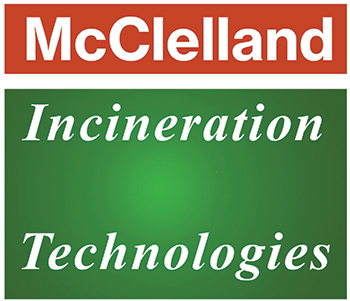 Introduction
Introduction
In the ever-evolving landscape of waste management, incinerator technology continues to advance rapidly — driving new levels of efficiency, sustainability, and energy recovery.
From enhanced combustion systems to innovative emissions controls, the latest technological innovations are revolutionizing how we manage and dispose of waste — while contributing to a more circular, low-carbon economy.
In this article, we explore some of the cutting-edge advancements shaping the future of industrial incineration.
Interested in modern incinerator solutions? Visit www.mcclellandindia.com — a trusted industrial incinerator supplier in India, based in Mumbai, with projects across Gujarat, Maharashtra, and nationwide.
Advanced Combustion Systems
Modern incinerators now employ state-of-the-art combustion systems designed to:
✅ Optimize energy recovery
✅ Minimize waste residues
✅ Enhance combustion efficiency
Key components include:
-
High-efficiency burners
-
Advanced combustion chambers
-
High-performance refractory materials
These innovations enable thorough, efficient waste incineration, maximizing heat transfer and energy conversion.
Next-Generation Emissions Control Technologies
Emissions control remains a top priority for incinerator operators — and significant advancements are raising the bar for air quality performance.
Modern pollution control systems now include:
✅ Electrostatic precipitators
✅ Baghouse filters
✅ Wet and dry scrubbers
These technologies capture:
-
Particulate matter
-
Heavy metals
-
Acid gases
Result: Harmful emissions are reduced to negligible levels, ensuring compliance with CPCB and international air quality standards.
Waste Segregation and Pre-Treatment
Pre-treatment plays a vital role in improving incineration efficiency and minimizing emissions.
Key processes include:
✅ Shredding and sorting → optimizes combustion conditions
✅ Automated sorting systems → remove contaminants
✅ Magnetic separators → recover recyclable metals
A cleaner, more homogeneous waste stream → results in more complete combustion and lower pollutant generation.
Advanced Energy Recovery Systems
Modern waste-to-energy (WtE) incinerators are designed to extract maximum value from waste materials.
Energy recovery innovations include:
✅ Steam turbines → generate electricity
✅ Heat exchangers → capture usable heat
✅ Cogeneration (CHP) units → supply both electricity and thermal energy
Result: Sustainable power for local communities and industries, with improved energy efficiency.
Integrated Waste Management Solutions
In response to growing environmental concerns and resource constraints, incinerator technology is moving toward integrated waste management models.
Key trends:
✅ Combined Heat and Power (CHP) plants
✅ Waste-to-energy parks
✅ Circular economy initiatives
Integration of incineration with:
-
Recycling
-
Composting
-
Other waste valorization processes
→ maximizes resource recovery and promotes a holistic, sustainable waste management strategy.
Remote Monitoring and Digital Control
Digitalization and automation are transforming the operation of modern incinerator facilities.
Innovations include:
✅ Remote monitoring systems
✅ Predictive analytics
✅ Real-time data visualization tools
Benefits:
✅ Optimize incinerator performance
✅ Minimize downtime
✅ Enhance safety and reliability
Conclusion
The future of incinerator technology is bright — driven by continuous innovation and a strong commitment to sustainability.
As we address the pressing challenges of waste management and clean energy production, these advancements offer promising solutions for a greener, more sustainable future.
By embracing these innovations and investing in research and development, industrial incineration can remain a cornerstone of sustainable waste management for decades to come.
To learn more about advanced incinerator solutions, connect with Mc Clelland Engineers Pvt. Ltd. — India’s trusted name in cutting-edge incinerator technology.

